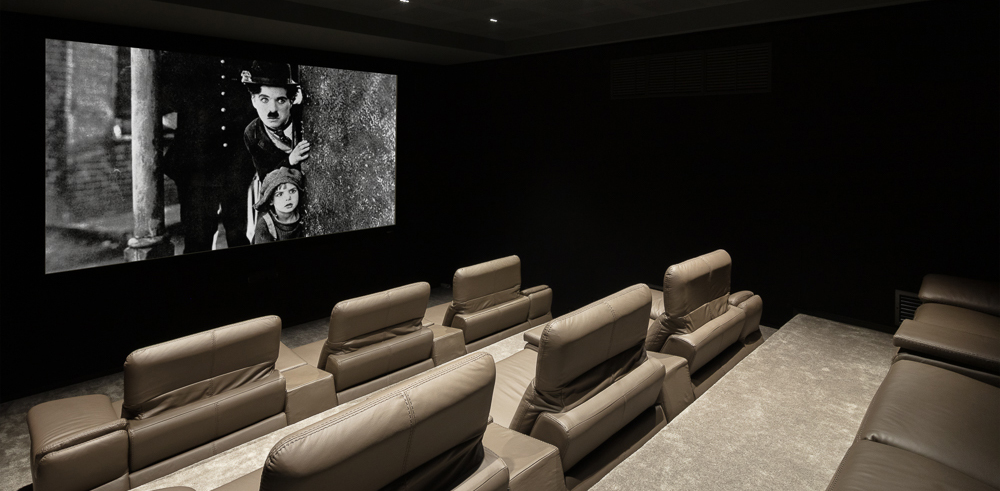Architects: Want to have your project featured? Showcase your work by uploading projects to Architizer and sign up for our inspirational newsletters.
At 3 p.m. on November 2, 1936, the soon-to-be unmistakable mustache and impeccable enunciation of Leslie Mitchell, the BBC’s first television announcer, welcomed viewers to a historic broadcast, Here’s Looking At You was the first regularly scheduled television service in the world. It was performed twice a day for ten days and was put together with a budget of £300.
The broadcast was a one-hour variety show featuring popular musicians and comedians. Well-known actress and singer Adele Dixon took to the small screen to perform “Television,” a song specifically composed for the occasion. On that day, as 400 families scattered across London gathered around their television sets in their living rooms, a new era of life at home emerged.
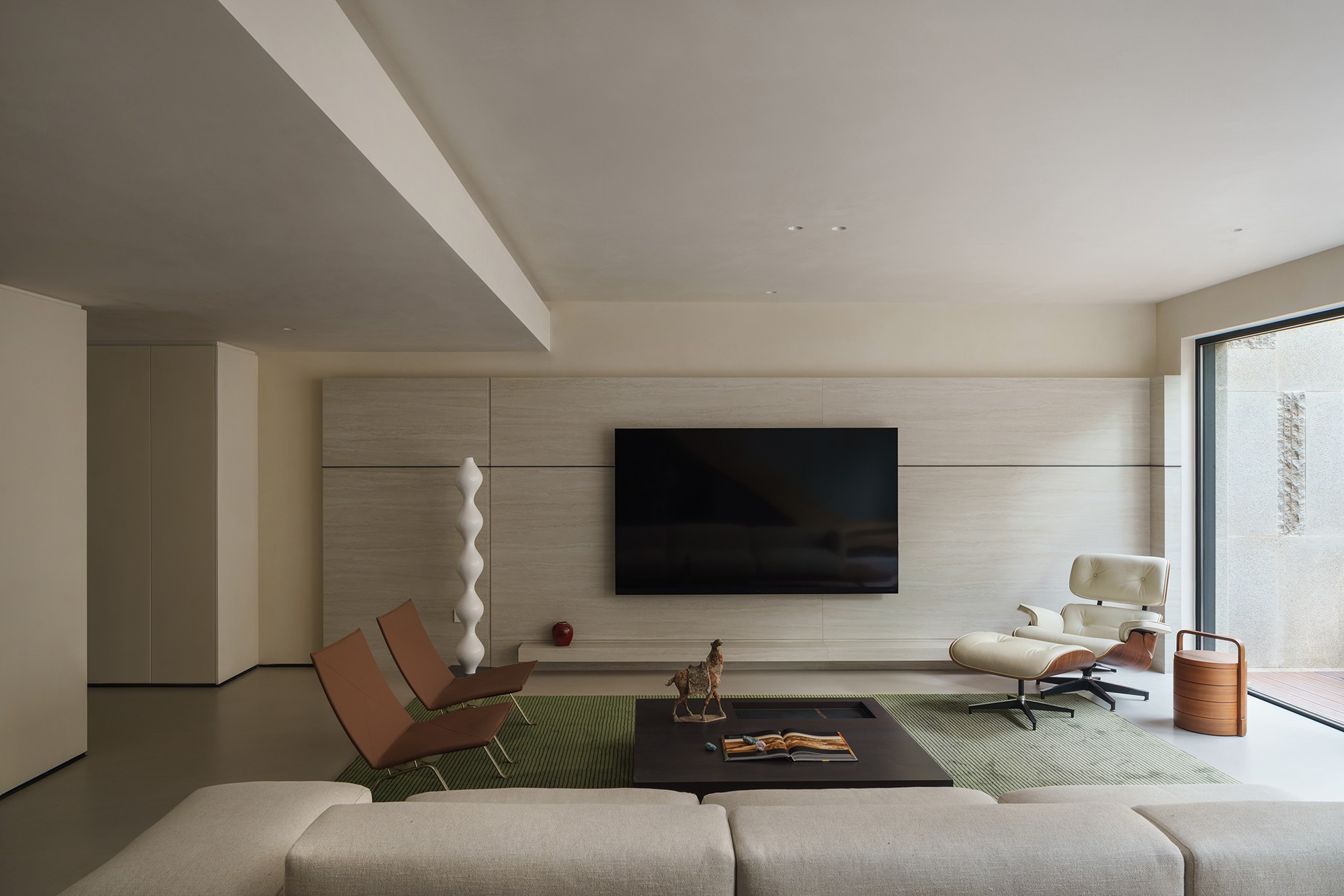
Natural Villa by GROWTO DESIGN by coolyee, Sichuan, China | Photo by Shifang
Without question, television has changed our lives. It changed the entertainment industry; it gave us access to the world on a global scale. It even revolutionized how children were being educated (big props, Jim Henson). However, the lesser-known effect of television is the profound impact it had and continues to have on the design of our homes. Not simply because what we see on screen influences our design choices, which, of course, it does; it’s far more basic than that. You see, as television evolved to be part of our everyday lives, it quite literally became part of the furniture.
Today, the no longer small screen (the average choice of television size is 55 inches, or 140 centimeteres) plays a leading role in our lives. Streaming services dominate. It’s estimated that Netflix users collectively watch over 7 billion hours of content each month and that there are around 1.5 billion people signed up to one streaming site or another. When Netflix were still in the mailing DVDs game, back in 2004, that number was closer to 10 million people. That works out to a staggering 14,900% increase in the global streaming subscriber base in just over twenty years.
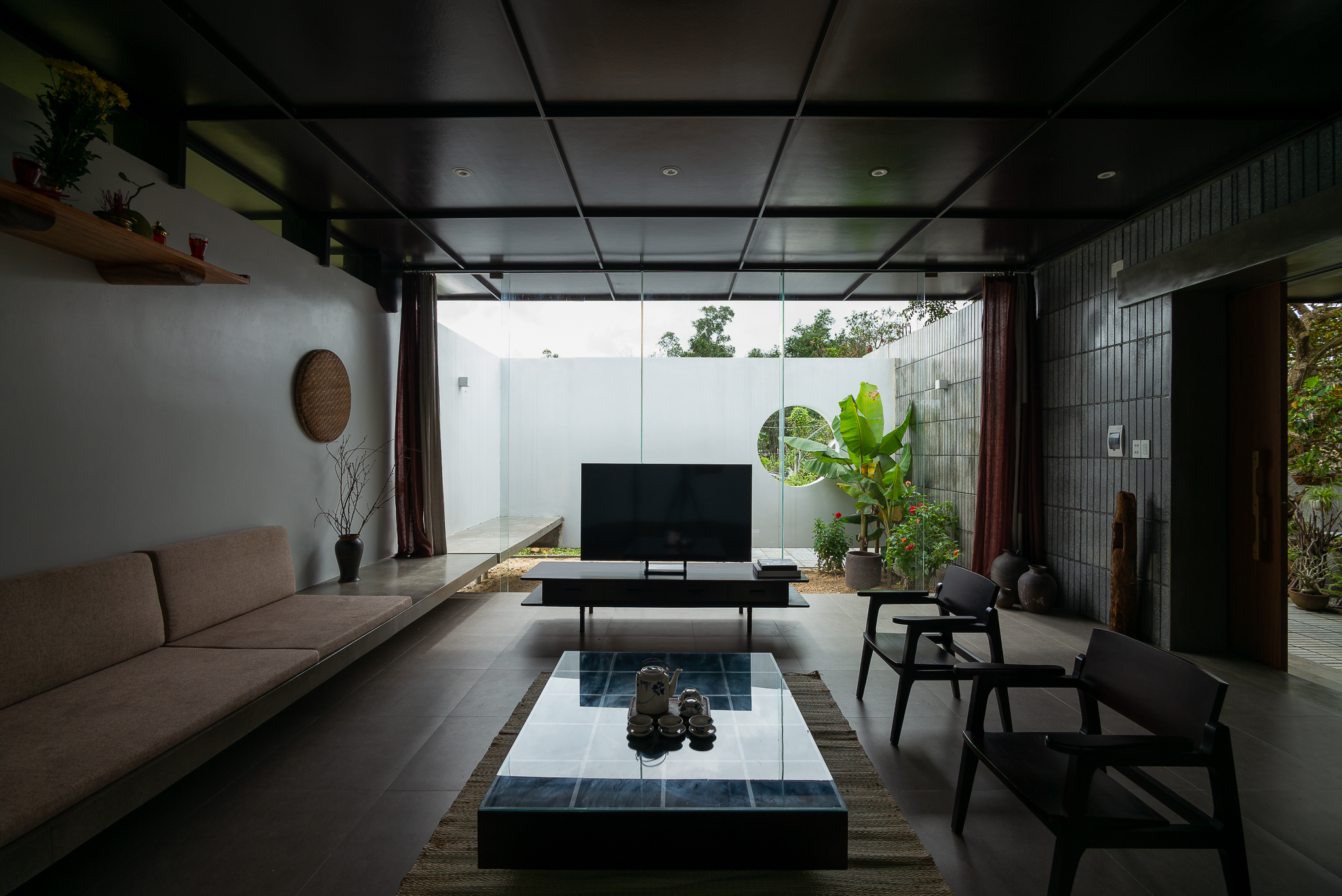
Quế Sơn house by BOW.Atelier, Vietnam | Photograph by Quang Dam
As streaming services emerged, our viewing habits changed. Watching television is less of a family affair now; we no longer gather around the box for a specific hour here to watch a favorite show there. We are in a time where marathon-viewing (watching hours of content in one sitting) is preferable. And hours of sitting in one place in one position can only mean one thing for our design demands—comfort.
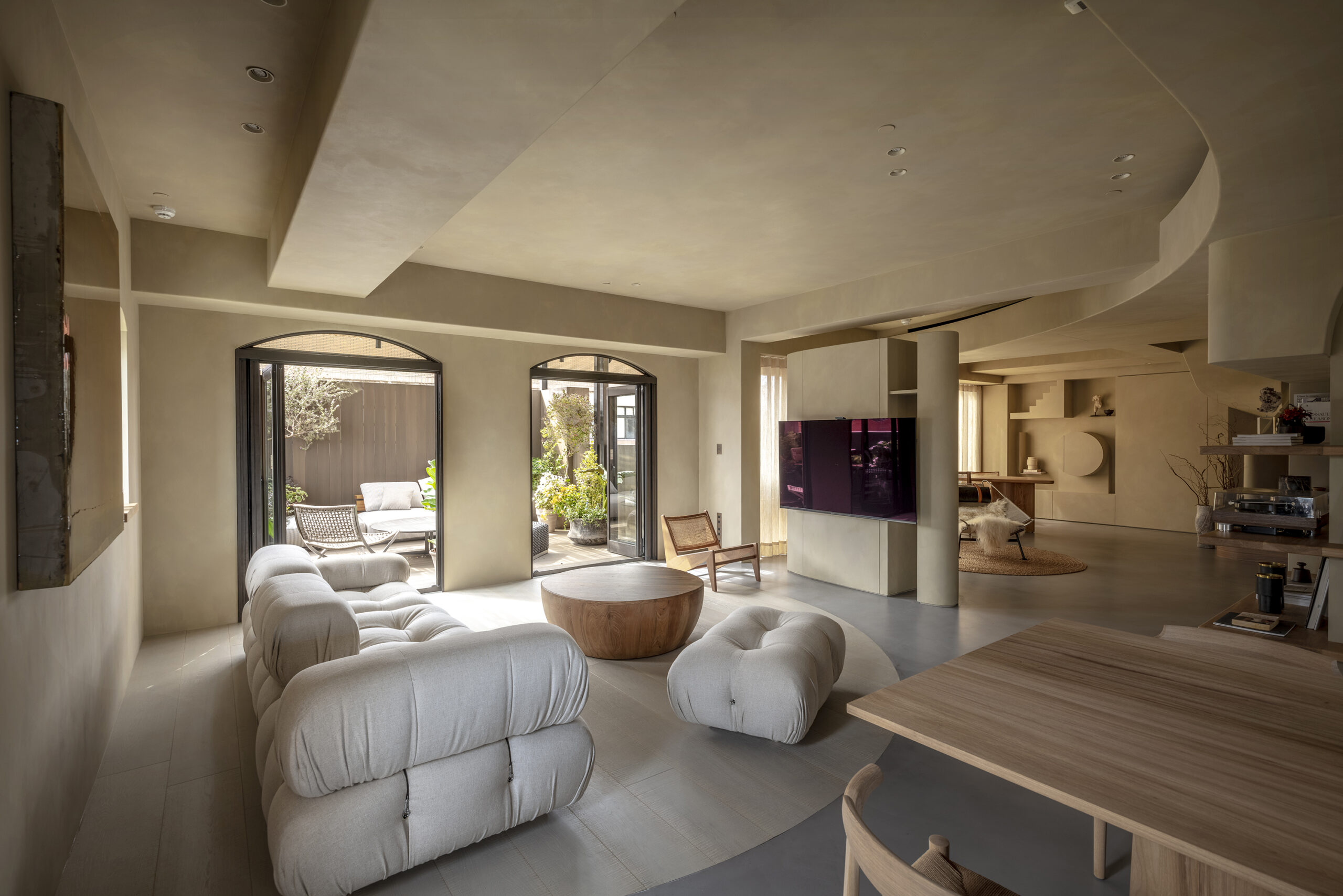
Where the Heart Desires by Peny Hsieh Interiors, Taipei City, Taiwan | Photo by Kuo-Min Lee
In recent years, we have seen a boom in big seating. Deep sofas with thick arms and sprung seats are everywhere. Recliners and chaises are now standard requirements for many people in their homes. The days of the perching sofa are gone. The homeowners of 2024 want to lounge, and lounge they shall. Designers are allocating much larger percentages of space for comfortable seating, seating that has been meticulously designed with ideal ergonomics to make watching television as posture-positive and kind to your behind as physically possible.

257_Penthouse in Cortina d’Ampezzo by MIDE Architetti, Cortina d’Ampezzo, Italy | Photo by Max Zambelli
And it’s not just our bodies that are feeling the benefits of this new design direction; acoustic comfort is also coming into play in a big way. Unsurprisingly, as television technology has improved, so has the supporting technology that often comes with it. Sound systems are huge business, and hooking them up to televisions has been vital in creating the most immersive in-home viewing experiences. However, what’s great for you might not be so great for your neighbors, and lately, designers have been taking a more active role in making sure the acoustics in our homes are well-considered to cater to our evolving viewing preferences.
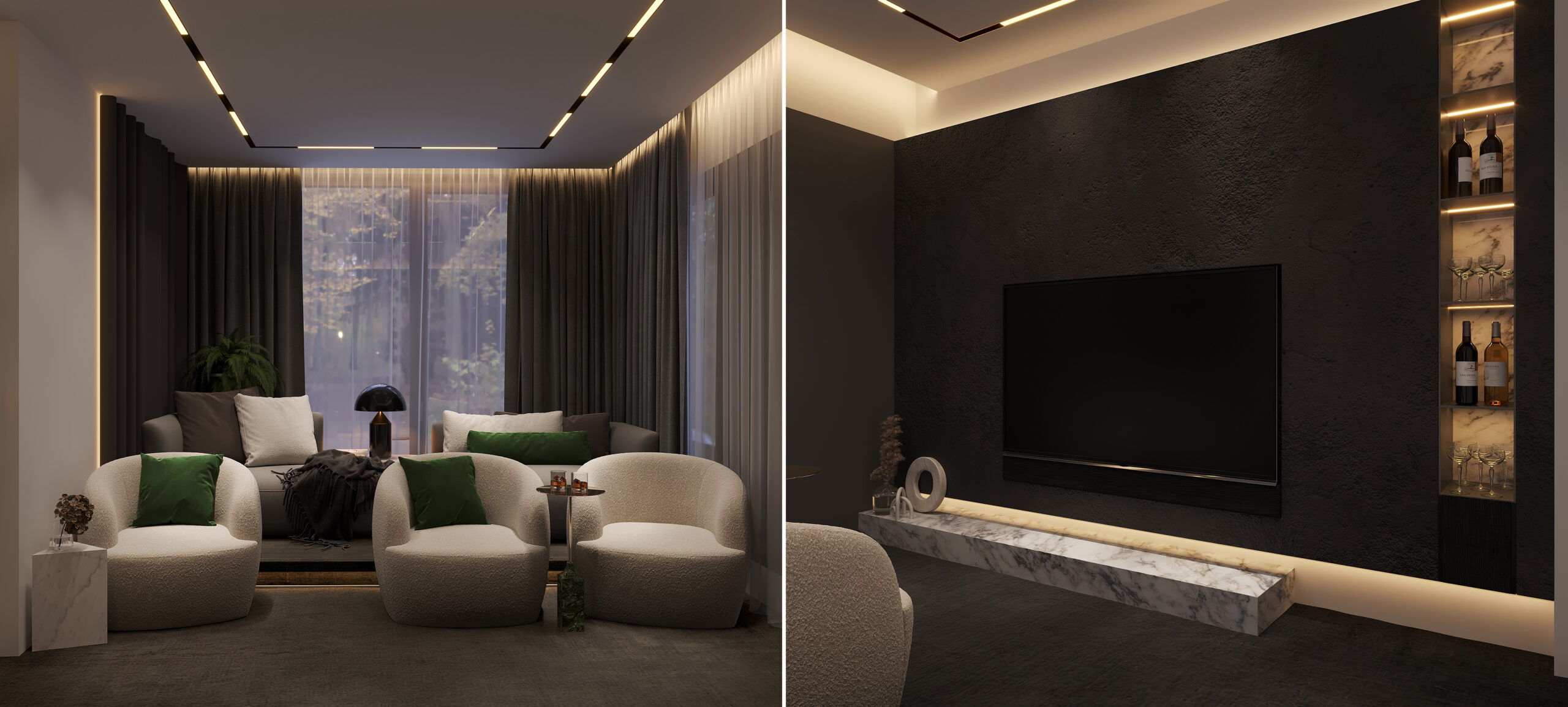
Dune House by Alina Sulina Design Studio, Manchester, United Kingdom
You see, in all parts of our lives, it is immersive experiences that people are striving for, and watching TV is no exception. As television has become more sophisticated, gradually morphing into ten-part movies while drawing in some of the biggest names in acting, viewers are doing everything they can to recreate that all-encompassing cinema experience at home. As a result, theatre rooms are on the rise. From in-home cinemas, with tiered seating and popcorn machines, to drop-down projection screens and 100% black-out shades. Designers are being tasked with replicating the magical feeling of being at the movies within the comfort of our homes, and they are stepping up to the challenge in a big way.
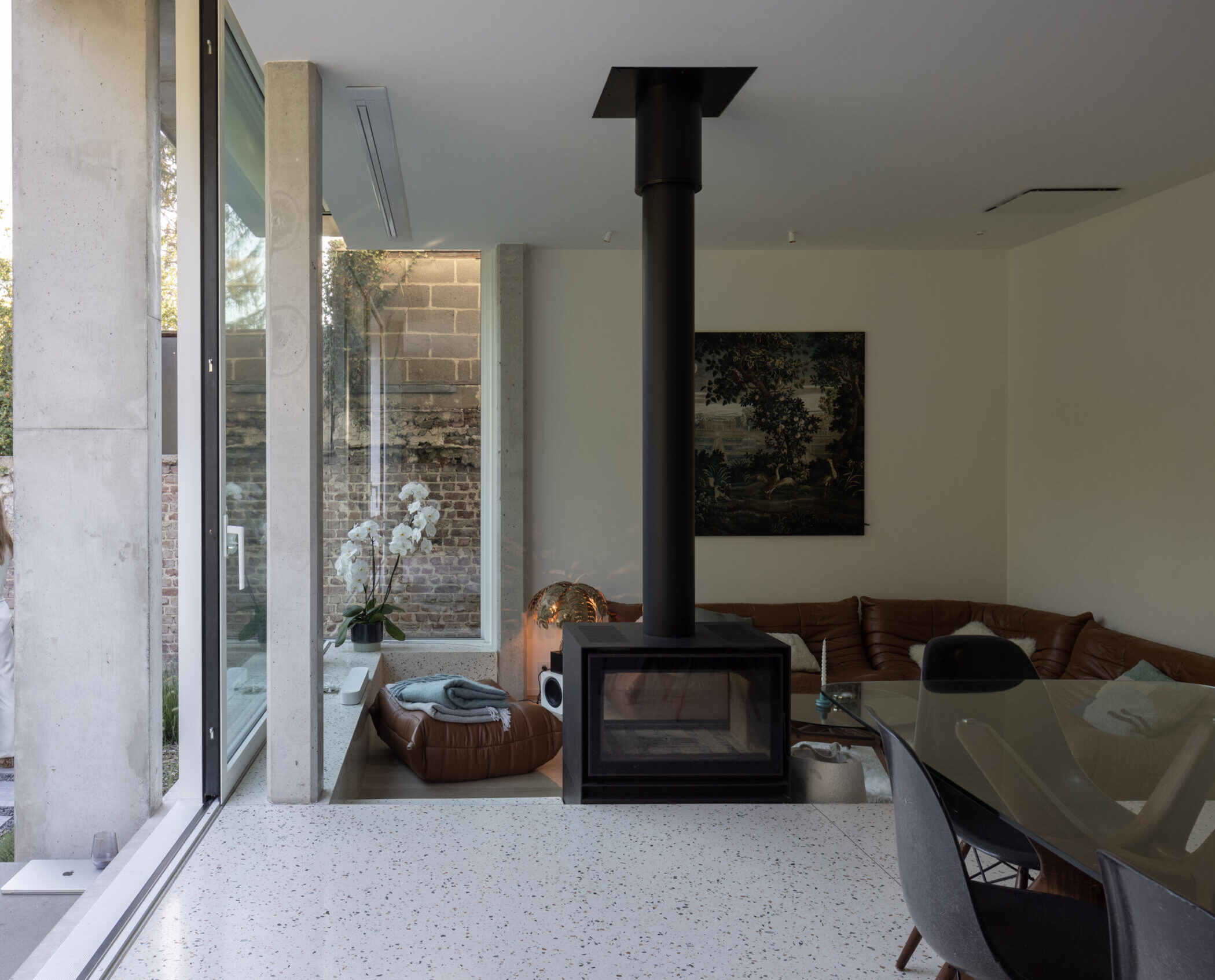
Loïc et Olivia by Atelier h Architecture, Tilff, Esneux, Belgium | Photos by Nicolas da Silva Lucas
However, despite our continued love of television, unlike days gone by when the TV was part of the furniture, and we accepted it as such, a new trend has begun to emerge. The “I don’t have a TV” aesthetic is on the rise. Now, don’t get me wrong, we all used to know a person who didn’t have a TV. That one friend who flatly refused to have a television in their home because they hated how they dominated the look and function of a room. They were rare, but they existed. Today, that choice to not see the imposing form of a television is more popular than ever, and with advancements in technology, the question is no longer “TV or no TV?” Integration is the key. As screens have gotten bigger and bigger, many very clever designers are finding ways to subtly disguise televisions so that we can have spaces that are not dominated by the positioning of the television. Rooms are becoming more adaptable, and the big black screen can be hidden and revealed when required. The result is interior schemes that feel more cohesive and complete with the television as a secondary feature.
The future of television is undoubtedly bright, and it’s likely that our homes will continue to evolve to accommodate new technologies and changing viewing habits. Who knows what innovations lie ahead? One thing is certain: our love for the small screen will continue to shape the spaces we live in, pushing the boundaries of comfort and design.
Architects: Want to have your project featured? Showcase your work by uploading projects to Architizer and sign up for our inspirational newsletters.
